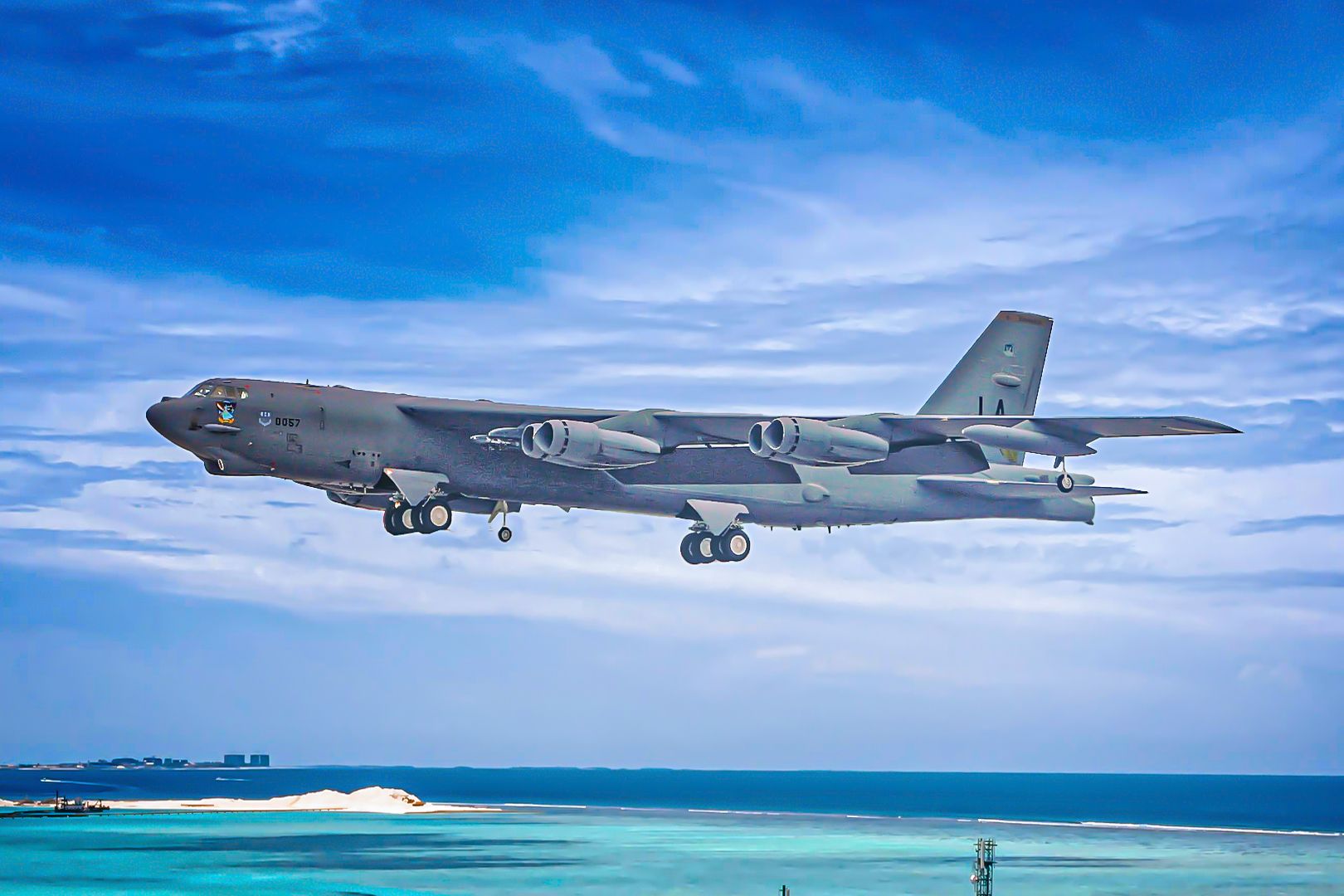Summary The B-52 uses wingtip wheels for support and during taxi, preventing bending on the ground. The B-52 is equipped with advanced targeting pods for battle assessment & combat engagements. The B-52 has two sets of wheels under each wingtip & can crab on the ground for crosswind landin The B-52H Stratofortress is a long-range, heavy bomber designed for close air support and air interdiction missions.
Capable of flying at high subsonic speeds at altitudes of up to 50,000 ft (15,160 m), the aircraft can carry both conventional and nuclear ordnance with worldwide precision navigation capability. The B-52 is unique in its design, particularly known for having a set of wheels under each wing. Those wheels are different than the main landing gear, and can be deployed or retracted for ground operations.

The set of wheels near the tips of the wing supports the large-span wings, taking the fuel weight. B-52 Superfortress Power plant: Eight Pratt & Whitney TF33-P-3/103 turbofan engines Thrust per engine: Up to 17,000 pounds Wingspan: 185 feet (56.4 meters) Length: 159 ft, 4 in (48.
5 m) Height: 40 ft, 8 in (12.4 m) Weight: 185,000 lbs (83,250 kg) Maximum Takeoff Weight: 488,000 lbs (219,600 kg) Fuel Capacity: 312,197 lbs (141,610 kg) Payload: 70,000 lbs (31,500 kg) The B-52 Superfortress features state-of-the-art armaments and systems to excel in air interdiction, counter air and maritime operations. The aircraft is equipped with electro-optical sensors, infrared, and advanced targeting pods to precisely perform battle assessment and engage in combat.
The type stood out during Operation Desert Storm, which deployed many armaments. According to the United States Air Force (USAF) , “During Desert Storm, B-52s delivered 40 percent of all the weapons dropped by coalition forces. It is highly effective when used for ocean surveillance and can assist the U.
S. Navy in anti-ship and mine-laying operations. In two hours, two B-52s can monitor 140,000 square miles (364,000 square kilometers) of ocean surface.
” The B-52 dates from a time when it needed eight engines and now it is easier to roll with its existing eight-engine design than reduce it to four. The aircraft can fly 7,652 NM (8,800 miles) without having to refuel. This capability is due to its large fuel tanks, which are filled up to the wingtips.
Speed: 650 mph (Mach 0.84) Range: 8,800 miles (7,652 NM) Ceiling: 50,000 ft (15,151.5 m) Armament: Approximately 70,000 lbs (31,500 kg) mixed ordnance bombs, mines and missiles.
After 7 decades, the "BUFF: remains the premier warbird in the US strategic arsenal. We now examine its Top 5 strategic roles. Supporting the heavy wingtips Unlike many military aircraft, the B-52 has two sets of wheels under its wingtips, also known as wingtip landing gear, to support the massive 185-foot wingspan.
Depending on the amount of fuel stored in the wings, the wingtips can flex downward 10 to 12 feet, requiring sufficient structural support. During taxi, takeoff, and landing, wingtip gears prevent the (heavy) wing from bending down on the ground. In comparison, an essential operational feature, the disadvantage of the wingtip wheels is that they require greater runway and taxiway width to ensure sufficient support.
For narrower strips, the wingtip wheels may drag through the grass on the side of the airstrip. The Air & Space Forces Magazine quotes Dave Prakash, a former B-52 pilot, stating, "Other aircraft, their wings can hang out over the grass no problem. But we have tip gear that need runway to touch down on.
" On July 16, 2023, a B-52H Stratorofortress performing a routine taxi at the Royal Air Force Fairford in the United Kingdom knocked out landing lights through its wingtip wheels. With a narrower taxiway, the side wheels almost dragged through the grass, hitting airport landing lights. The B-52 has been the mainstay US strategic bomber for seven decades.
A major reason for its staying power has been its versatility. Crabbing to navigate narrow runways The B-52 landing gear is designed to rotate up to 20 degrees to the left or right to enable a safe crosswind landing. The aircraft wheels can also help on the ground, allowing it to move sideways when required.
For narrow airfield operations, the aircrew can decide which of the two wingtip wheels hangs in the air. To achieve that configuration, pilots can move fuel from one wing to the other to keep only one side heavier, requiring support from the wingtip gear. The gear on the other, lighter side, can remain hanging in the air, making airport operations possible.
Knowing runway dimensions in advance allows pilots to plan, leaving enough room for safe ground operations. In certain situations, a crew member can guide the plane onto the taxiway (or runway), preventing collision with airport lights. The US Air Force has been instructed to address the issues with the infamously bad work environment onboard the B-52.
.



















